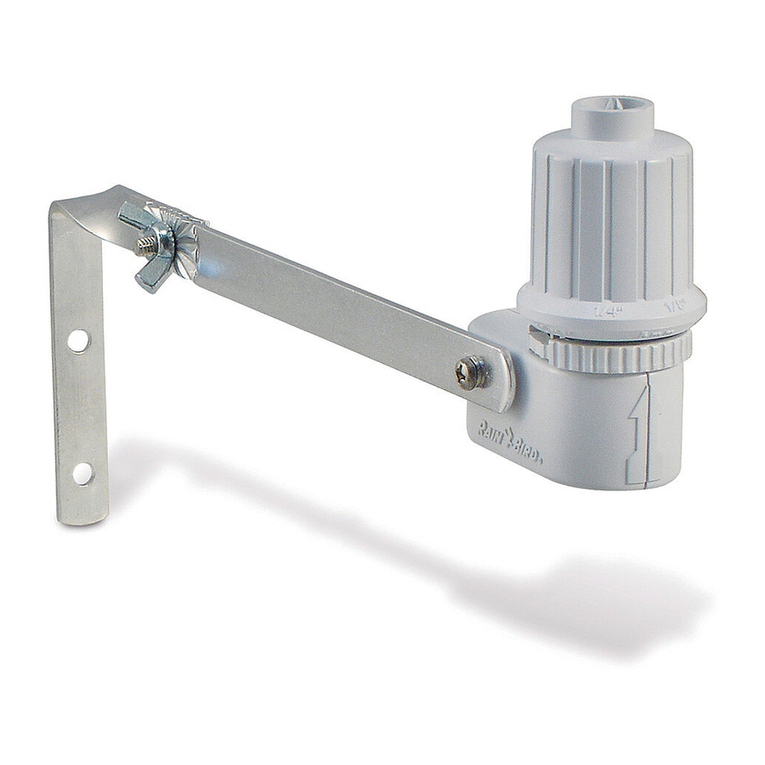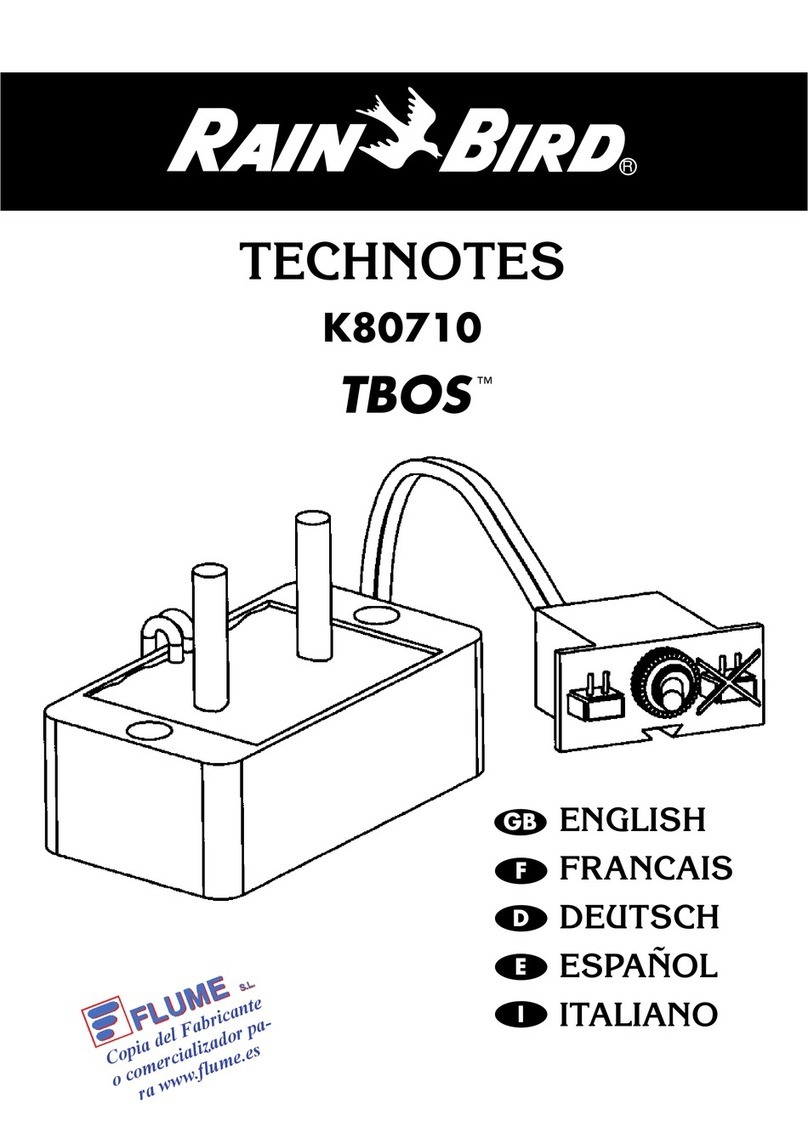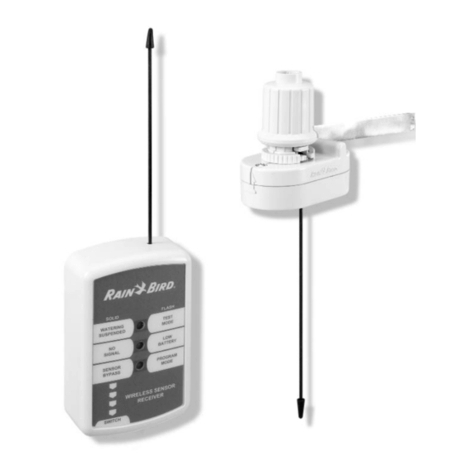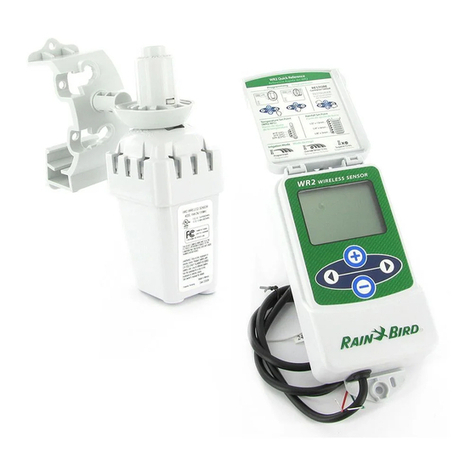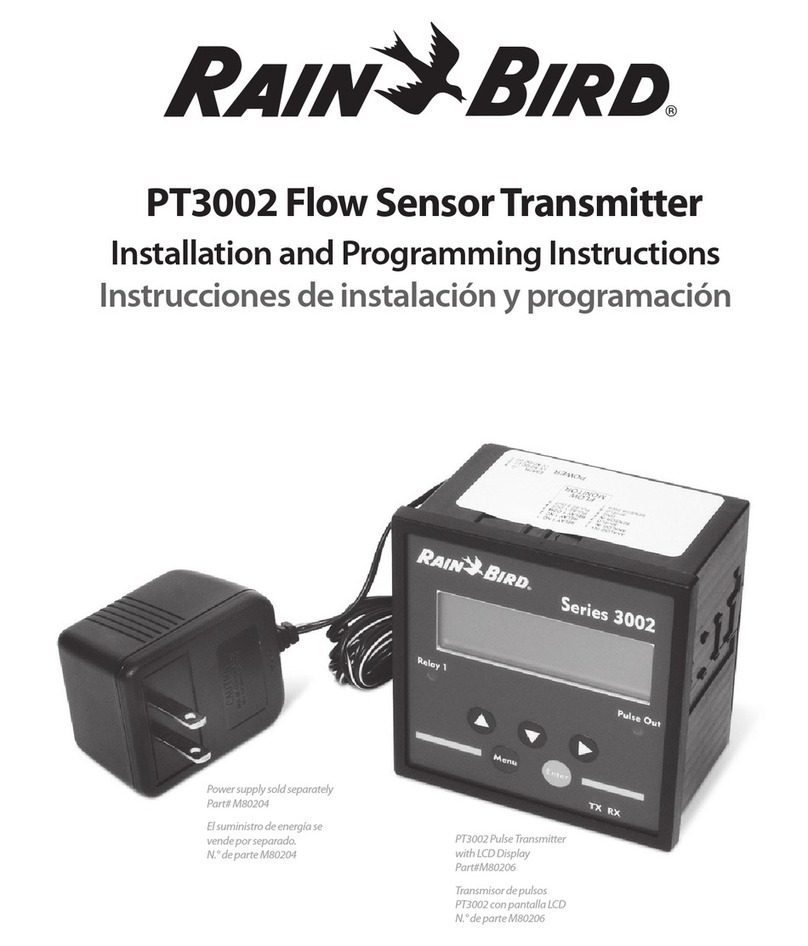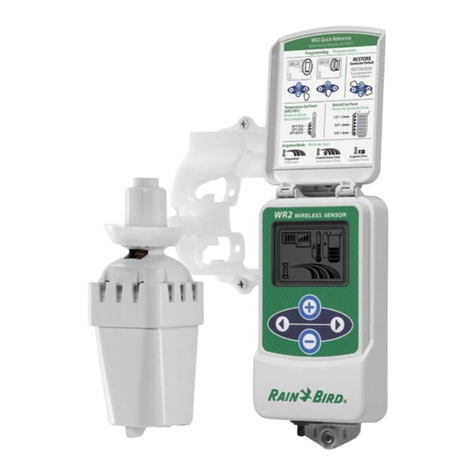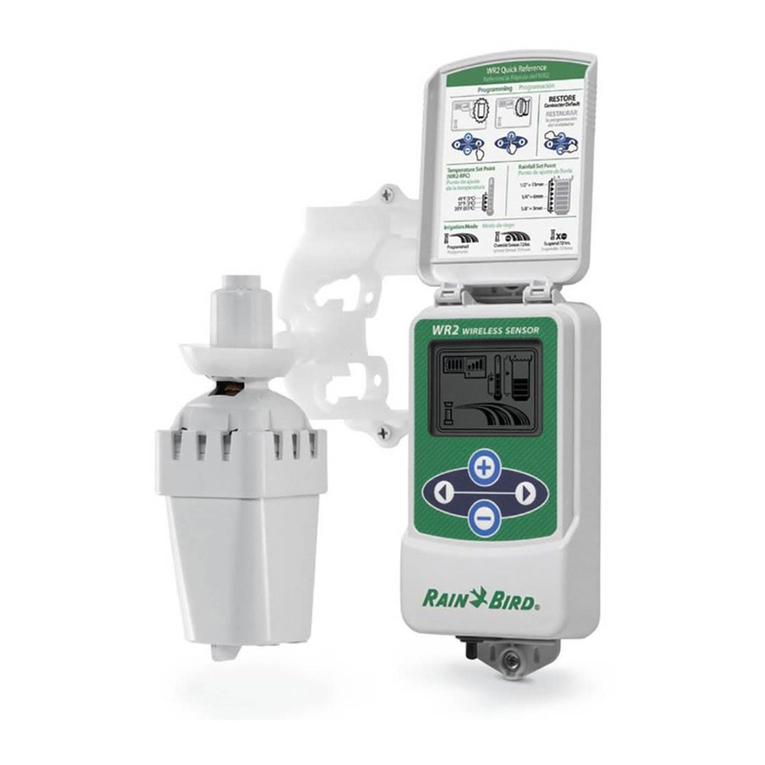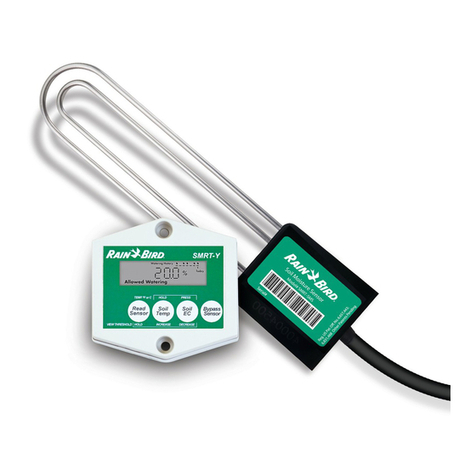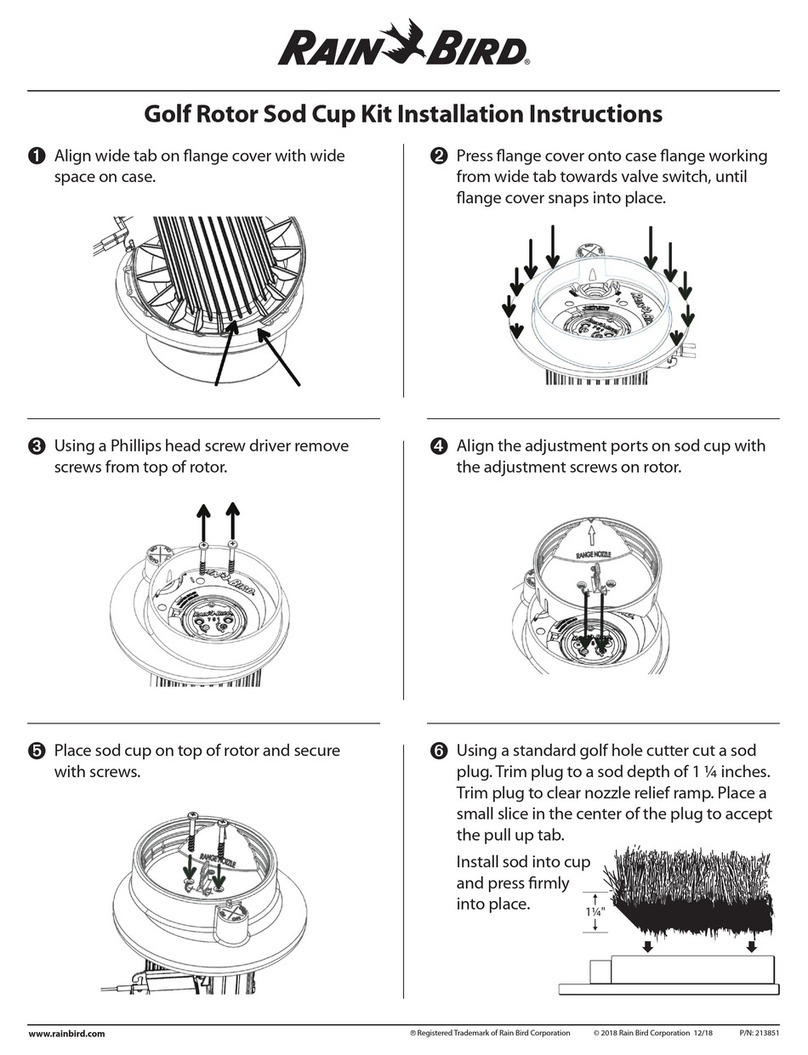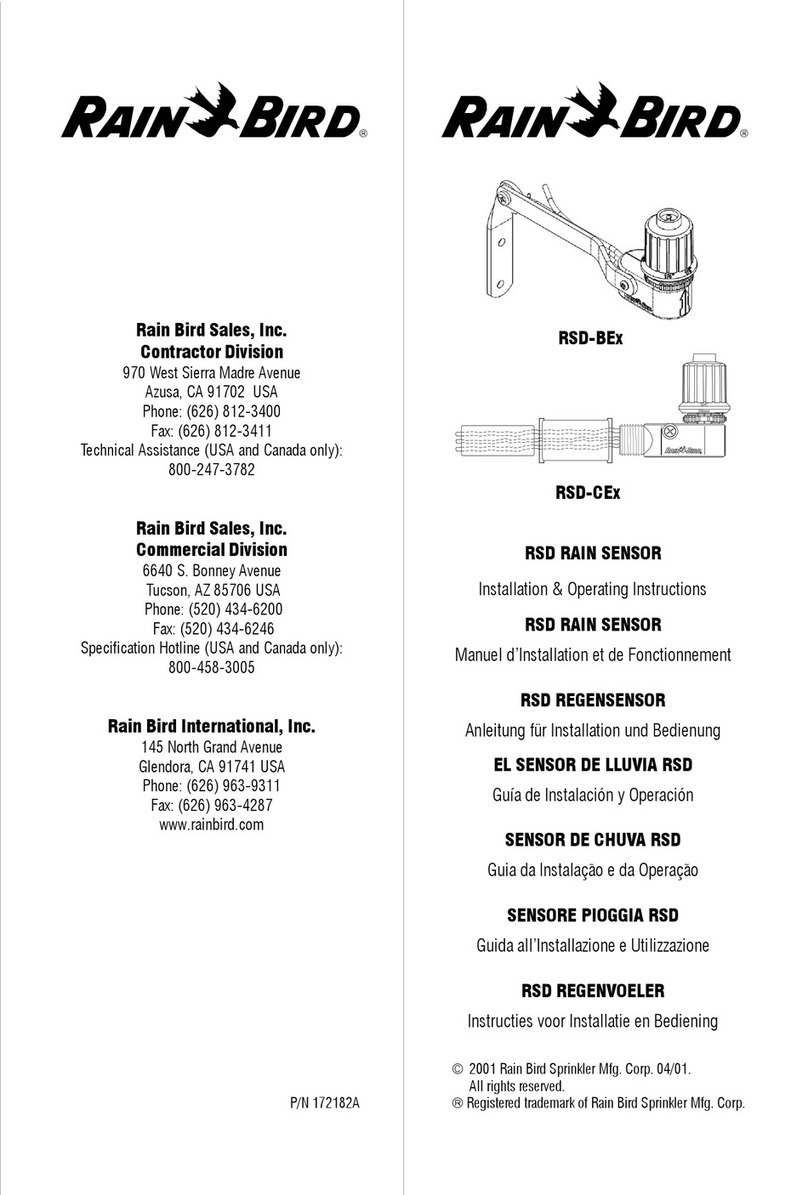
Rain Bird Flow Sensors
Manual
4
To install sensor in tee
1) Apply a small amount of silicone grease to O-rings on sensor insert and chamfer on inside lip of tee. Clean
off any grease which could be deposited on the impeller.
2) Align flow arrow on sensor with direction of flow.
3) Carefully press sensor straight into tee. Caution: Impeller may strike sides of venturi cavity in tee if
misaligned, causing damage to impeller or shaft.
4) Install clevis pin through the tee, sensor, and conduit cap, and install split ring.
5) Before pressurizing pipe, verify that:
•All threaded connections are tight.
•The flow direction arrows on the tee and sensor are aligned with the flow direction.
•The clevis pin and cotter ring are installed.
Mechanical Installation for Insert Sensors
The insertion depth and alignment of the sensor assembly are critical to the accuracy of the flow measurement.
The Flat End of the sensor tube assembly MUST BE INSTALLED 1-1/2" from the inside wall of the pipe. In order
to allow for variations in wall thickness, lining or coatings, the depth adjustment is controlled by the position of
the Hex Nuts on the three (3) threaded studs of the Hex Mounting Adapter. The Hex Mounting Adapter is
provided with a 2" Male NPT connection.
There are two methods of mounting these Rain Bird sensors in a 3” or larger pipe. One for PVC pipe uses a 2”
NPT threaded pipe saddle. The other, for steel pipe, uses a welded-on fitting such as a Thredolet®, also tapped
for a 2” NPT connection. In either case, cut a 2” hole through a depressurized pipe and then secure the saddle
or welded fitting to the pipe. Note: Do not use a threaded outlet tee, the inside dimension of the tee is not
the same as the pipe O.D. Install the 2” NPT adapter provided, using a thread sealant to prevent leakage.
Tighten as necessary. Rain Bird insert style sensors are calibrated with the sensor inserted 1 1/2” into the pipe
flow.
To determine the proper insertion depth, proceed as follows:
1) Apply Anti-Seize thread lubricant, supplied with the sensor, to the threaded studs of the mounting
adaptor.
2) Determine the height to the upper adjusting nuts on the three 1/4” studs using the insertion depth gauge
contained in the RBIK Installation Kit. Set them at 3 3/4" above the inside wall of the pipe.
3) Clean O-Rings and flow sensor sleeve, and lightly lubricate O-Rings with silicone grease from the packet
provided or some other acceptable lubricant. Take care not to get grease on the impeller or bearing.
4) Insert the flow sensor into the 2” NPT adapter so that the mounting holes in the positioning collar fit over the
studs on the adapter. Lower the sensor onto the previously adjusted nuts. Install the lock nuts on top of the
positioning collar and tighten. Now tighten the lower jam
nuts firmly against the upper adjusting nuts to secure
them for future removal of the sensor for inspection or
service.
Alignment of Flow Sensor
1) Loosen positioning collar set screws with a 3/32” Allen
wrench. Place the alignment rod through the sight holes
in the flow sensor. Refer to Figure 2. Using the
alignment rod as a guide, align the flow sensor so that
the flow label arrow matches pipe flow direction and so
that the alignment rod is exactly parallel to the pipe.
This procedure aligns the impeller directly into the fluid
flow.
As a backup to the flow arrow label, there is a small hole
next to the larger sighting hole of the upstream side.
Figure 1
Installation of FS350B and FS350SS
